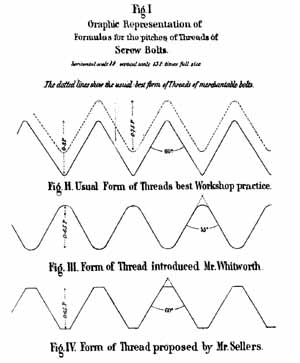|
ISO 2711
ISO 2711 is an ISO standard describing formats for ordinal dates. The ISO is an international standard-setting body composed of representatives from various national standards organizations. ISO 2711 was issued in 1973, and was superseded by ISO 8601 ISO 8601 is an international standard covering the worldwide exchange and communication of date and time-related data. It is maintained by the International Organization for Standardization (ISO) and was first published in 1988, with updates in ... in June 1988. References #02711 {{measurement-stub ... [...More Info...] [...Related Items...] OR: [Wikipedia] [Google] [Baidu] |
International Organization For Standardization
The International Organization for Standardization (ISO ; ; ) is an independent, non-governmental, international standard development organization composed of representatives from the national standards organizations of member countries. Membership requirements are given in Article 3 of the ISO Statutes. ISO was founded on 23 February 1947, and () it has published over 25,000 international standards covering almost all aspects of technology and manufacturing. It has over 800 technical committees (TCs) and subcommittees (SCs) to take care of standards development. The organization develops and publishes international standards in technical and nontechnical fields, including everything from manufactured products and technology to food safety, transport, IT, agriculture, and healthcare. More specialized topics like electrical and electronic engineering are instead handled by the International Electrotechnical Commission.Editors of Encyclopedia Britannica. 3 June 2021.Inte ... [...More Info...] [...Related Items...] OR: [Wikipedia] [Google] [Baidu] |
Ordinal Dates
An ordinal date is a calendar date typically consisting of a ''year'' and an ''ordinal number'', ranging between 1 and 366 (starting on January 1), representing the multiples of a ''day'', called day of the year or ordinal day number (also known as ordinal day or day number). The two parts of the date can be formatted as "YYYY-DDD" to comply with the ISO 8601 ordinal date format. The year may sometimes be omitted, if it is implied by the context; the day may be generalized from integers to include a decimal part representing a fraction of a day. Nomenclature ''Ordinal date'' is the preferred name for what was formerly called the ''"Julian date"'' or , or , which still seen in old programming languages and spreadsheet software. The older names are deprecated because they are easily confused with the earlier dating system called 'Julian day number' or , which was in prior use and which remains ubiquitous in astronomical and some historical calculations. The U.S. military sometim ... [...More Info...] [...Related Items...] OR: [Wikipedia] [Google] [Baidu] |
International Standard
An international standard is a technical standard developed by one or more international standards organizations. International standards are available for consideration and use worldwide. The most prominent such organization is the International Organization for Standardization (ISO). Other prominent international standards organizations including the International Telecommunication Union (ITU) and the International Electrotechnical Commission (IEC). Together, these three organizations have formed the World Standards Cooperation alliance. Purpose International standards can be applied directly or adapted to meet local conditions. When adopted, they lead to the creation of national standards that are either equivalent to or largely align with the international standards in technical content, though they may have: (i) editorial variations, such as differences in appearance, the use of symbols, measurement units, or the choice of a point over a comma as the decimal marker, and (ii) va ... [...More Info...] [...Related Items...] OR: [Wikipedia] [Google] [Baidu] |
Standards Organization
A standards organization, standards body, standards developing organization (SDO), or standards setting organization (SSO) is an organization whose primary function is developing, coordinating, promulgating, revising, amending, reissuing, interpreting, or otherwise contributing to the usefulness of technical standards to those who employ them. Such an organization works to create uniformity across producers, consumers, government agencies, and other relevant parties regarding terminology, product specifications (e.g. size, including units of measure), protocols, and more. Its goals could include ensuring that Company A's external hard drive works on Company B's computer, an individual's blood pressure measures the same with Company C's sphygmomanometer as it does with Company D's, or that all shirts that should not be ironed have the same icon (a clothes iron crossed out with an X) on the label. Most standards are voluntary in the sense that they are offered for adoption by people ... [...More Info...] [...Related Items...] OR: [Wikipedia] [Google] [Baidu] |
ISO 8601
ISO 8601 is an international standard covering the worldwide exchange and communication of date and time-related data. It is maintained by the International Organization for Standardization (ISO) and was first published in 1988, with updates in 1991, 2000, 2004, and 2019, and an amendment in 2022. The standard provides a well-defined, unambiguous method of representing calendar dates and times in worldwide communications, especially to avoid misinterpreting numeric dates and times when such data is transferred between countries with different conventions for writing numeric dates and times. ISO 8601 applies to these representations and formats: ''dates'', in the Gregorian calendar (including the proleptic Gregorian calendar); ''times'', based on the 24-hour timekeeping system, with optional UTC offset; '' time intervals''; and combinations thereof.ISO 8601:2004 section 1 Scope The standard does not assign specific meaning to any element of the dates/times represented: t ... [...More Info...] [...Related Items...] OR: [Wikipedia] [Google] [Baidu] |

